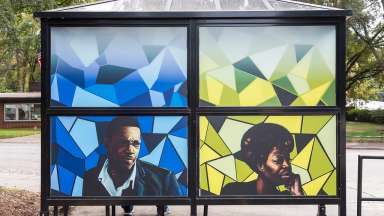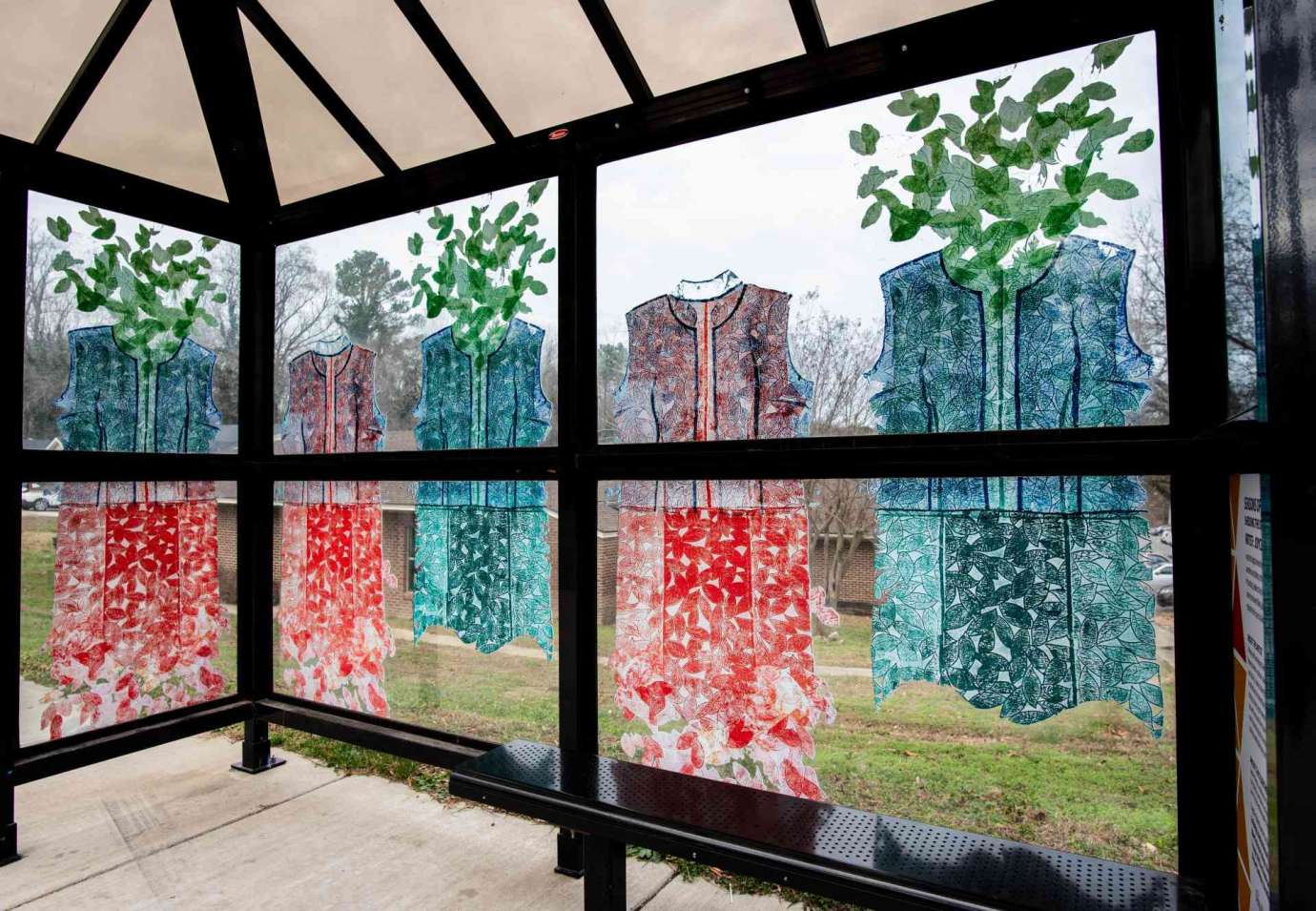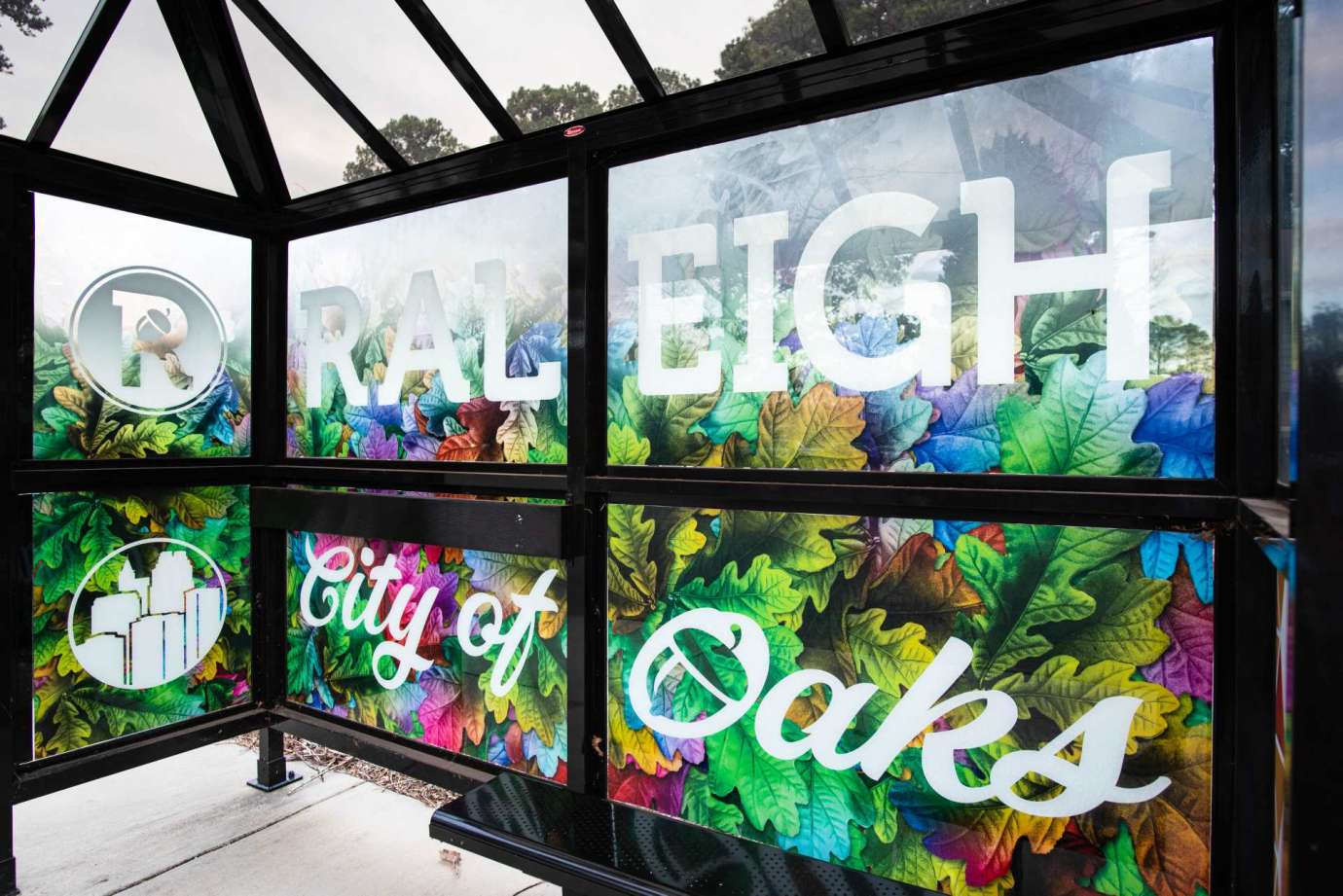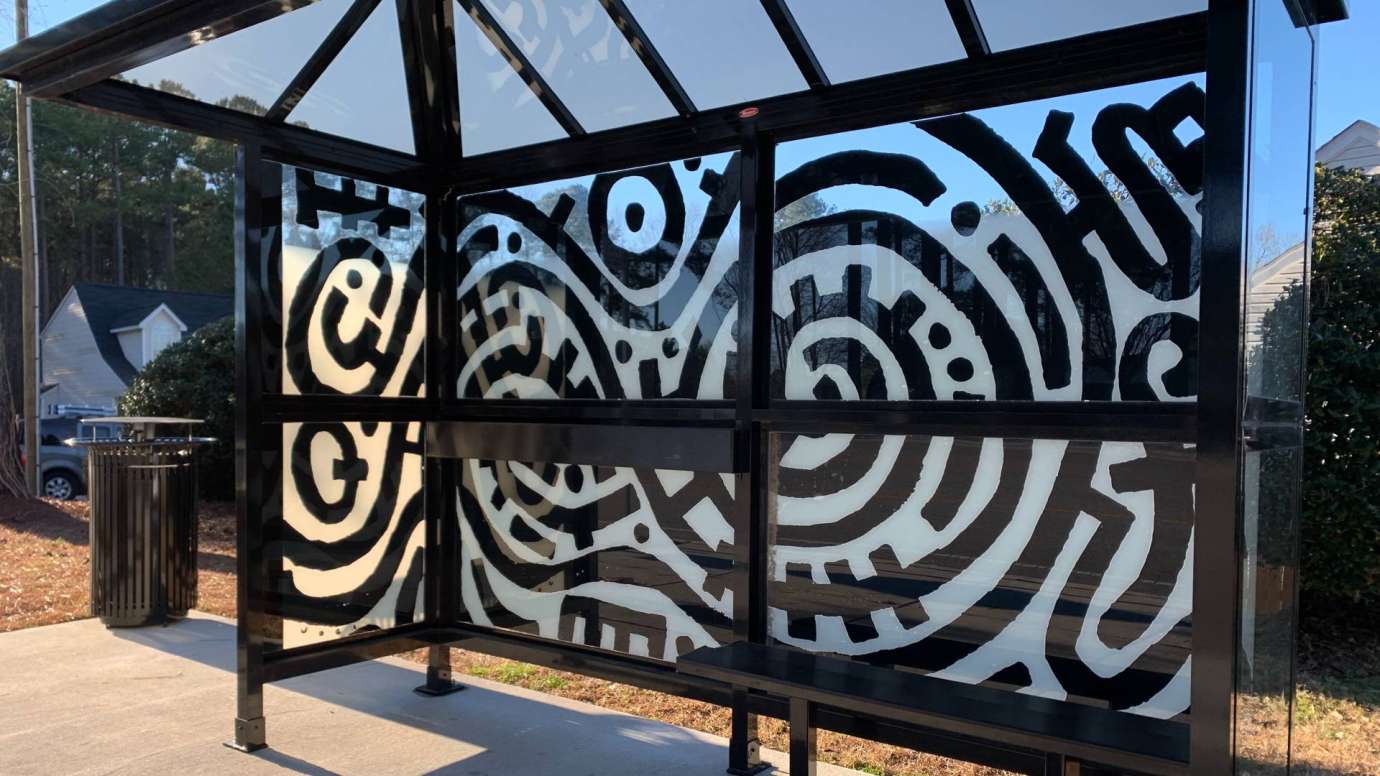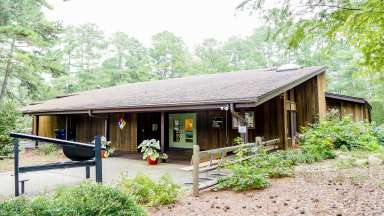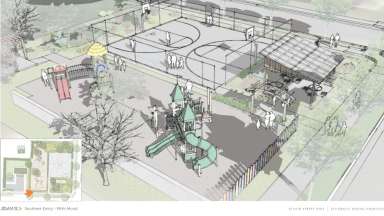Jump To:
Image Above: Nina, a Monk, and a Trane, Kiara Sanders, vinyl-wrapped bus shelter, located at Pecan Rd. at S. Saunders St.
Things to Consider
Location
- Consider contacting surrounding property owners. Letting community members know about your project will help build support and create a successful project
- If you have a specific bus shelter in mind, let us know on your request form and include the intersection closest to the bus shelter and a screenshot of its location on Google Maps.
Cost
- Typically vinyl installers charge $1000 to $1500 to print and install a vinyl artwork on a bus shelter
- Artists who are hired by an organization typically receive a stipend of $500-$1000 for their artwork
- This type of project does not include funding from Raleigh Arts. Check out other funding opportunities
Design
- The artwork must be applied as a vinyl wrap
- Avoid words or shapes that look like road signs (arrows, red octagons, etc.)
- Artwork must include the artist's credit. Crediting guidelines for temporary art in public spaces include:
- Hashtags and artist signatures are allowed
- No more than two hashtags are allowed
- No logos are allowed
- Hashtags and artist signatures should be sized so they are less than or equal to 2% of the painting surface. For smaller artworks, the artist can choose to use up to 2” x 24” instead to retain legibility. The artist has the digression to make the hashtag/signature smaller if they choose
- Confirm the type and layout of the design file needed by the vinyl installer
Opacity
- The design should be viewable from both inside and outside of the shelter. This requires either:
- A single-color design that relies on a silhouette
- Or a printer who can print a layer of transparent color sandwiched between a gradient transparent layer of white ink and another layer of transparent printed color. Raleigh Arts staff can recommend printers with this technical capability.
- The images will be viewable from in front of or behind the shelters. Keep in mind that any text will appear reversed when viewed from behind the shelter.
- Artwork can be completely opaque on the bottom portion of the shelter but must allow visibility at the top, as seen in the diagram above. Do this by creating a 30% transparency gradient at the top of the shelter or leaving areas of the design clear.
- The two panels facing on-coming traffic must be clear to allow passengers to see the bus approaching.
